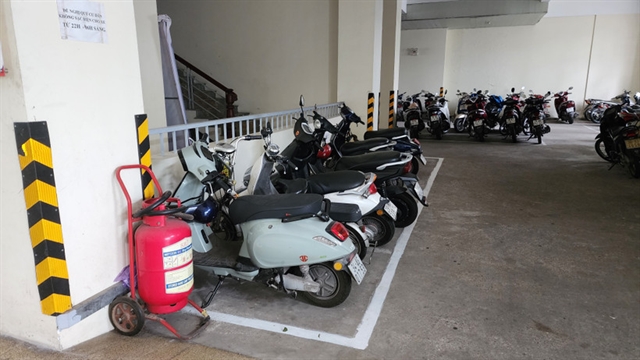 Opinion
Opinion

 |
| Dr Vương Ánh Dương, Deputy Director of the Department of Medical Services Administration under the Ministry of Health. Photo baochinhphu.vn |
The shortage of nurses in Việt Nam, both in quantity and quality, has been putting pressure on the healthcare system, affecting patient care and overburdening medical staff. The Government News spoke with Dr Vương Ánh Dương, Deputy Director of the Department of Medical Services Administration under the Ministry of Health, about this issue.
How would you assess the current nursing workforce in Việt Nam’s healthcare system? How does it compare with other countries in the region?
Nurses play a crucial role in Việt Nam’s healthcare system. However, the country is currently facing shortages in both quantity and professional structure, as well as in qualifications, compared to actual needs and to regional and global standards.
Việt Nam currently has about 140,000–150,000 nurses, equivalent to roughly 14–15 nurses per 10,000 people, among the lowest ratios in ASEAN. By comparison, Thailand has around 20–25 nurses per 10,000 people, Malaysia 30–35, Singapore over 70, and OECD countries average between 80 and 120 nurses per 10,000 people. This is a considerable gap that must be narrowed in the coming years.
The Party’s Resolution No 20 has set clear targets that by 2025, Việt Nam should reach 25 nurses per 10,000 people, and by 2030, 33 per 10,000. These benchmarks are important foundations for developing recruitment, training and workforce allocation plans in line with the health sector’s development needs.
In terms of educational qualifications, Việt Nam’s nursing workforce is undergoing a transition towards higher standards. Currently, college-level nurses make up nearly 50 per cent of the total, university graduates about 38–40 per cent, while those with postgraduate degrees remain very limited, below 2 per cent.
In developed countries, most nurses hold at least a bachelor’s degree. In Australia, nearly 23 per cent of nurses have postgraduate qualifications; in the United States, around 20 per cent. Several ASEAN countries, including Thailand, Malaysia and the Philippines, already have well-developed systems for advanced and specialised nursing training. This shows that Việt Nam needs to accelerate efforts to standardise qualifications, especially in postgraduate and speciality training.
Does the current nursing workforce meet the country’s healthcare demands? Is this why nurses in Việt Nam are often overworked?
In reality, nurse shortages exist across all levels of care, especially in central hospitals and intensive care units (ICUs), where patients require continuous, specialised monitoring.
A recent survey by the Department of Medical Services Administration found that, on average, one ICU nurse in Việt Nam cares for three to four patients per shift.
In contrast, in many developed countries such as the United States, Australia or European nations, the ratio is typically one nurse per one or two patients, depending on severity. Lower ratios allow nurses to monitor patients more closely, provide holistic care and prevent medical incidents.
At lower-level hospitals, due to limited nursing staff, basic care tasks such as hygiene assistance, nutrition and repositioning to prevent bedsores are often handled by patients’ family members. This directly affects the quality of care and increases the risk of hospital-acquired infections.
Meanwhile, nurses are often overworked, taking long shifts under high pressure, while their income and working conditions remain inadequate. Such sustained stress inevitably leads to fatigue and burnout.
Overall, Việt Nam’s nursing workforce is developing but still lags behind the demands of a modern and internationally integrated healthcare system. With the legal framework now more complete and the clear goals set out in Resolution No. 20, it is expected that the nursing workforce will be strengthened in both quantity and quality, helping to improve patient care and enhance the competitiveness of Việt Nam’s healthcare system regionally and globally.
What has the nursing education system done to improve the quantity and quality of nurses?
Việt Nam’s nursing education system is relatively diverse, covering all levels from intermediate and college to university and postgraduate training. More than 100 institutions nationwide currently offer nursing programmes. Many schools have proactively reformed their curricula to align with ASEAN competency standards and move toward international integration.
In recent years, nursing education has made significant progress. The number of nurses pursuing higher-level degrees has steadily increased, particularly those bridging from college to university and from university to postgraduate programmes.
However, there are still challenges. Training quality remains uneven among institutions, clinical practice conditions in some schools are inadequate, and the connection between training and actual hospital workforce needs is still limited.
In short, Việt Nam’s nursing education system is undergoing a strong transformation. Yet continued, coordinated investment is needed to ensure both the quantity and quality of nursing personnel, meeting the healthcare sector’s growing needs and the public’s rising expectations for medical care.
The shortage of nurses has led to gaps in patient monitoring and comprehensive care. Do you think this is one of the causes of recent conflicts between healthcare workers and patients or their families?
Nurse shortages are a serious issue not only in Việt Nam but globally. When there are too few nurses, patients cannot receive continuous, holistic care. Basic needs such as hygiene support, nutrition, bedsore prevention and rehabilitation may not be fully met.
However, this is not the main cause of recent conflicts between medical staff and patients or their families.
Conflicts in healthcare facilities stem from many factors and from all sides. No one wants such incidents to happen. Both healthcare workers and patients share the same ultimate goal – to restore the patient’s health and save lives.
That is why all parties must remain calm, cooperative and understanding, working together toward that common purpose.
What fundamental solutions should State management agencies adopt to improve both the quantity and quality of the nursing workforce? What policies and mechanisms need to change to foster stronger human resource development in this field?
Việt Nam must implement a comprehensive and long-term set of solutions with active participation from ministries, sectors and localities.
First, in terms of human resources, it is essential to clearly define the scope and specific nature of nursing work to establish appropriate staffing norms and job positions. This will serve as a basis for strengthening recruitment and ensuring adequate nurse allocation across medical facilities.
Priority should be given to providing sufficient nursing staff in critical departments such as intensive care, emergency, neonatal and geriatric units, moving toward a model of comprehensive patient care without relying on family members for support.
At the same time, training standards should continue to be raised and specialised education expanded. Nurses should be encouraged to pursue higher qualifications through bridging programmes from college to university and postgraduate levels, along with greater emphasis on advanced and specialised nursing training.
Second, regarding professional capacity and management, leadership and nursing administration skills need to be enhanced at all levels. It is also important to strengthen training in communication, soft skills and professional ethics, while promoting the application of technology in patient care.
The Ministry of Health is gradually expanding the professional scope of nursing practice under the 2023 Law on Medical Examination and Treatment, creating a clearer legal framework that empowers nurses to take a more active role in implementing care prescriptions and fully exercising their professional expertise.
Third, policies and working conditions remain key factors in retaining and motivating nurses. Salary schemes, incentive allowances and welfare benefits should be further improved in line with the specific demands of the profession.
In addition, it is vital to invest in safe and healthy working environments, particularly in high-pressure departments and remote or disadvantaged areas. Ensuring both material and mental well-being will help nurses feel secure and committed to long-term service. — VNS




